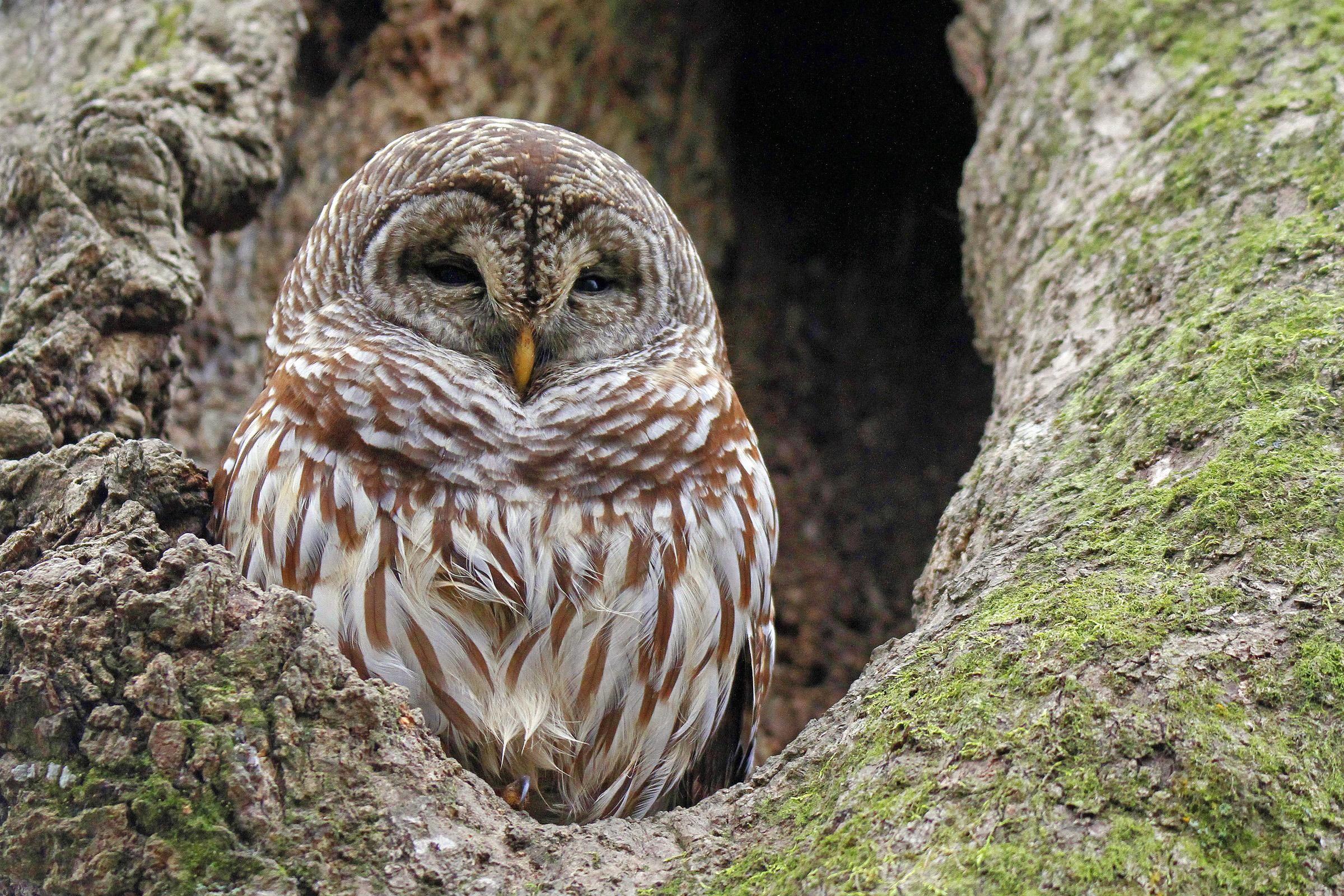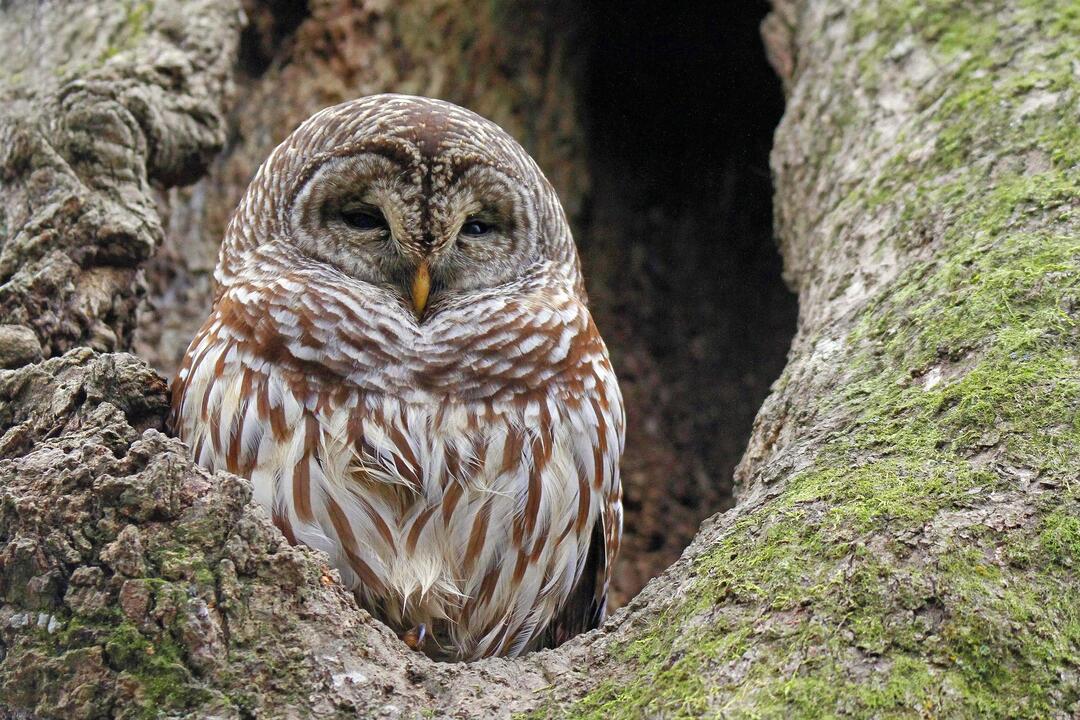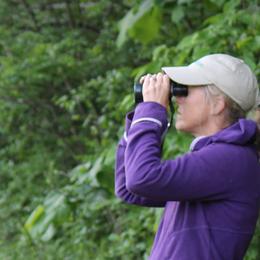I spend a lot of time in the Vermont woods. It is the place that feeds my soul, both professionally and personally. Whether it’s bushwhacking to a remote peregrine cliff, thrashing through brush looking for warblers, or exercising with my dogs in the daylight or moonlight, I am happy and comfortable in this environment. I have had a few heart-racing encounters with wildlife, but nothing that has caused me to change my habits. If I have any worries about being out in the woods, they are more about deer ticks and the people I may encounter, not the animals.
My sense of complacency changed recently when I was cross country skiing in the fresh powder off the Catamount Trail near my house. It was a quiet, sunny day, and I skied on a trail that had been covered by the fresh snow. I suddenly felt something hit my head while I was coasting downhill – it wasn’t heavy like a falling branch, but it wasn’t soft like some powder falling off a tree limb. I put my hand up to my head to see what it might be, and there were two legs and talons gripping onto my head and hat. I couldn’t see it, but I could feel it, and I knew it was a Barred Owl.
I have spent a lot of time with Barred Owls. They were a very common patient at the Vermont Institute of Natural Science (VINS), where I worked rehabilitating raptors and other birds in the early 1990s. Most often they would come to us either hit by a car or emaciated at this time of year. I always thought of them as feisty but not incredibly powerful patients. Occasionally I’ve had an owl swoop at me when out at dusk or at night, but I always felt like the owl was being curious rather than territorial. Barred Owls have the reputation of being somewhat tame and unafraid.
Having one imbedded in my head in the middle of the forest changed my attitude. This bird did not want to let go. The more I held on to its legs, the more it dug in. I knew from my raptor rehabilitation experience that hawks and owls have a ratchet-like mechanism in their legs and feet, and if their legs are extended straight, their feet automatically open. I tried with all my might to straighten the owl’s legs. The minutes that I spent doing this felt like forever, and I knew that once they did let go, I was going to start bleeding.
Finally, the owl let go. I was holding it by the legs in my hand, bleeding from the side of my face and head. I had to decide whether to let go of it or try to ski one-handed out of the woods with the owl until I was in an open field. I decided that it had probably had enough of me, so I let go. It flew to a perch. I moved towards the field, but as I did this, it continued to swoop at me, hit my head, and scratch me even more.
At that point I was afraid. For the first time in all my hours spent in the woods, I was afraid of and felt overpowered by a wild creature, despite how small and light this owl was compared to me. This owl did not want me in its territory, and while I was trying to get out of the area it was defending, it kept reminding me that I was within that area. Finally, just before I reached the field, the bird flew at me one more time and took my hat (my Audubon hat, ironically). It flew to a perch and seemed satisfied enough with my hat that I could ski out into the field and make my way home. Fortunately, my family was there to help determine whether I needed stitches (no, thankfully). I know that birds do not contract rabies, so other than being prescribed antibiotics as a safety measure, I did not need immediate medical attention. Even more surprisingly, this owl (we assume) went on to attack my neighbor in the same way a few hours later. She lost her hat and mittens and was also scratched and punctured.
February/March is the breeding season for owls in Vermont. They are establishing territories, finding mates, and locating a nest site, which is typically a large cavity in a tree. This behavior is triggered by hormonal changes as well as environmental changes like the increase in daylight. Given the size of the area this owl appeared to be defending, I wonder if they have a mate and nest site yet. Maybe once it does, the territory boundaries will be a bit smaller. I also wonder if there are lots of owls in the woods near my house this year, increasing competition for space and nest sites, which could explain why this bird is being so aggressive. I guess we will never know.
What I do know is that I will keep going out in the woods, but I will respect this owl’s territorial boundaries and avoid the area as much as possible. All of us need to recognize and respect the needs of the wild animals in our woods, as these spaces are critical to their survival.
Just in case, I will ski with a helmet for the next few weeks until this owl’s hormones subside. And I still need to find my hat.






